Activating public spaces: monuments and public art
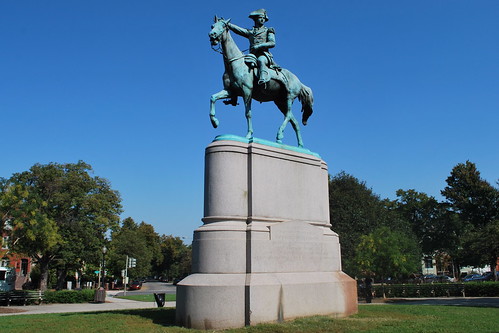
Photo of the sculpture of Gen. Nathaniel Greene in Stanton Park, DC, by M.V. Jantzen. Creating sculptures such as this was a big part of the City Beautiful Movement, and the creation of monuments and sculptures as part of a system of socialization of recent immigrants, and introducing them to the nation's history.
DC Metro Urban Diary, in "What Makes a Monument?," covered a roundtable, "Approaches to Public Art, Placemaking, and National Commemoration" sponsored by the National Capital Planning Commission.
Artists discussed how a sculpture or building isn't enough, that programming to engage the public in the meaning and purpose of the monument must be offered. Another artist, proposed what we would call nontraditional monuments. From the article:
Julian LaVerdiere, artist and designer of the World Trade Center Tribute in Light, expressed his wish to see monuments not become celebrated for a singular statue or brick, but derive meaning through their ability to offer a "transformative experience" to the visitor. He cited a potato famine memorial in New York City at which the artist had simply picked up an acre of a fallow Irish farm and plopped it in the middle of a city square. Both LaVerdiere and Justine Simons, Director London's Cultural Agenda and Programming for the Fourth Plinth in Trafalgar Square, voiced their support of temporary public art instillation as a substitute for monuments.
The article wrapped up with some important questions:
How do we wake up the landscape with interactive, meaningful public art and memorials? How do we keep monuments alive? What is the future of place making in a fractious culture, and a divisive climate? And how do we sneak some interesting public art past the NCPC, ANC's, District Council, and the Committee of 100?
I think the answer is to start doing temporary public art programming in a superior, serious, ongoing fashion. If London (and Bristol) can do temporary interactive exhibits of pianos in the public space ("Art project puts pianos on street" from the BBC and "All Around London, an Invitation to Make Music" from the New York Times) and Sioux Falls, South Dakota can have an annual public sculpture exhibiting program why can't we do something comparably interesting and more significant than fiberglass donkeys and elephants?
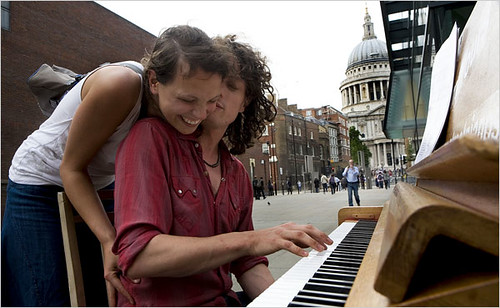
This photo: Hazel Thompson for The New York Times. Trying out one of the 30 pianos placed around London, this one at the Millennium Bridge. Below 1: Flickr photo by M.V. Jantzen of "Party Animals" at the Convention Center. Below 2: "Pas de deux," Shari Hamilton, Westhope, ND, Sioux Falls Sculpture Walk. Photo by Paul Schiller.

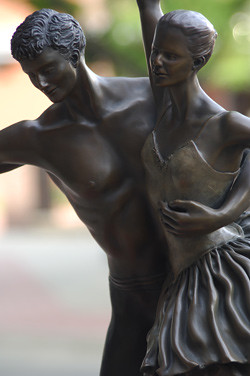
Traditional monuments and sculptures aren't so much about engaging people as they are elements in constructing national memory, myth, and narrative.
Similarly, all the various boarded up vacant nuisance properties on DC's commercial corridors, that aren't being taxed at the vacant property rate because the owners put in some new windows (taking off boards) and a for lease sign, even though the building is likely to be uninhabitable, ought to be "forced" ("strongly encouraged") to participate in storefront art exhibiting programs.
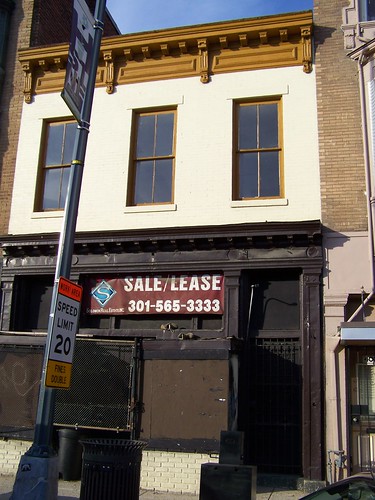
Many communities have such programs. The one in Pittsfield, Massachusetts is probably the oldest and most consistent. Seattle launched such a program, Storefronts Seattle. See "Artists take to empty storefronts: Idea is to put unused space to use" from the Seattle Post-Intelligencer.
Because of the city's role as a national capital, which for better or worse, makes us a world city, much of the art and monumental focus is on permanence and what we might call "art of the past", rather than experimentation and support of live practicing artists and the "art of today."
Maybe by expanding what we do to be more playful and engaging when it comes to public art, it will be possible to be more engaged in monuments and memorials in real time.
Labels: and memory, arts-culture, cultural planning, local history, monuments, museums, national identity, urban design/placemaking
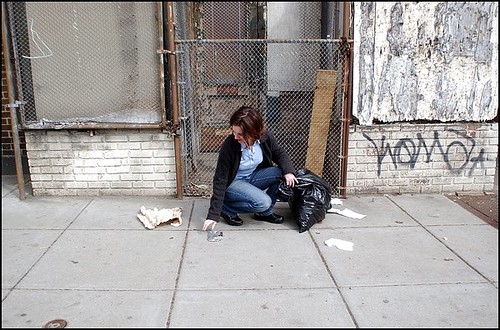
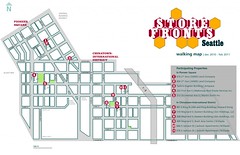
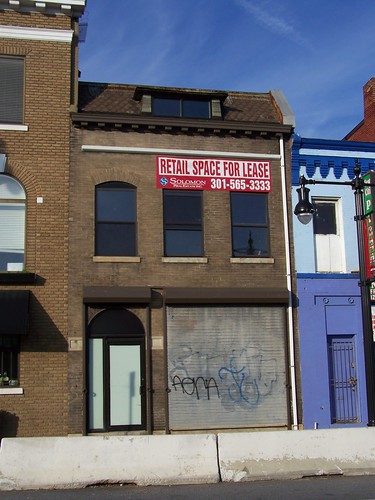



0 Comments:
Post a Comment
<< Home